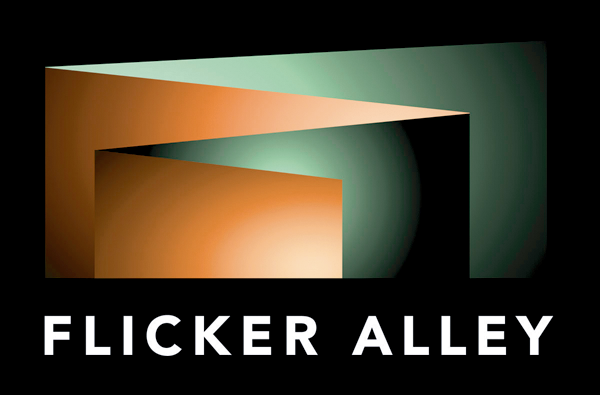Recently, our Flicker Alley media team was able to interview our Producing Partners for Flying Clipper, Busch Media Group. We found out that it is no small feat to restore film negatives in 4k!
What inspired you to restore The Flying Clipper?
It all started with Herbert Born who owns the Schauburg cinema in Karlsruhe and is a good friend of our company. The Schauburg conducts an annual 70mm Festival where they show classic films in their original formats. They still have projectors to show real film and are not restricted to digital projection. (Herbert and the Schauburg are featured in the bonus material of the Blu-ray Disc and UHD Blu-ray Disc.)
Herbert pointed out that there is a spectacular German documentary film called Flying Clipper from 1962 which he had shown at the festival several times. It was the first German film shot in 70mm.
After the very successful theatrical distribution in the sixties and a re-release in the seventies, Flying Clipper disappeared into oblivion. It was shown on German TV several times, but in a reduced aspect ratio and in SD format, which practically eliminated the stunning visual impact of the film.
With the introduction of large-size 4K television screens and UHD Blu-ray Discs, we saw an opportunity to transfer Flying Clipper to a medium which (at least partially) allowed the presentation of the film in its original visual splendor.
What was the process like to digitize the film in 4K?
After we acquired worldwide distribution rights, we got hold of a film print stored in the German Federal Film Archive. Then, we had it scanned by a 4K scanner in London.
The entire amount of data from this scan was about 30 TB. Each frame was scanned as a DPX file and totals 6 to 8 MB. The process of scanning the film lasted about two weeks. After that, a technical wizard, Vincent Koch worked for months on the restoration of every single take. He erased scratches, cleaned out dust, corrected the color and created all the necessary software by himself. Then, the entire film went through additional HDR color grading in order to provide the best picture quality.
The restoration of the sound for the film came with its own challenges. We found the language tracks for most of the international versions of Flying Clipper and included them in the release. The original theatrical sound was a six-channel audio track, (5 front, one surround) which was restored.
Furthermore, we produced a new Dolby Atmos soundtrack, where we leveraged original audio samples from the 1960s (race cars, airplanes, ships, etc.) to provide an immersive audio experience.
What makes Flying Clipper important for audiences today?
Flying Clipper is an artistic document of the early sixties. Back then most Germans could not afford to travel to the places shown in the film. Nowadays one can book a cruise to the Mediterranean for a moderate price and they’ll see Barcelona, Cannes, Athens and many other destinations. In 1961, this was out of reach for the average German citizen. Going to the cinema offered the only (inexpensive) alternative to see these ‘exotic’ places. Watching Flying Clipper must have been a dreamlike experience for audiences, especially in the 70mm format.
In this spirit, the film presents an overoptimistic and sometimes trivialized picture of the Mediterranean region. We are shown lots of colorful folklore, but the occasionally tense political background of the countries is excluded. In Flying Clipper the whole region from Spain to Egypt feels like a cheerful panorama with happy people everywhere. We know today, that the reality at that time was different.
In a certain way this perception does have its sincere ‘raison d’être’ [purpose]. The whole film is driven by a hopeful and friendly spirit. It proclaims that we can overcome all of our disputes and struggles, becoming one happy world. The sailing ship Flying Clipper becomes something like a travelling emissary; connecting all these countries and people everywhere. This may sound naive, but it is admirable and idealistic at the same time.
It is evident that key moments of the film are stunning, even by today’s standards. There’s a scene in the last third of the film where they mounted a 70mm camera on a convertible. This car was driving amongst the Formula 1 racecars during the qualifying laps for the Monaco Grand Prix. As a viewer, you are virtually taking part in the race, driving around the steep turns of Monaco racetrack. It is breathtaking.
Do you have any other titles in the making?
We have one classic film called Savage Pampas, starring Robert Taylor. It was also shot in 70mm. The story takes place in Argentina, while the visual imagery and the dramatic structure are derived from the Hollywood western genre.
Were there any hiccups during the restoration? If so, how did you solve them?
The biggest challenge was that every single frame of the scanned film had to be checked. For example, our technical team noticed that four frames were missing. Therefore, the entire scene had to be scanned again.
Another problem was that the English audio track for the film was only available on an outdated magnetic film format. We had no equipment available to play the magnetic track. So, we searched for an antique machine to restore the English audio.
Why did you choose to partner with Flicker Alley for your physical release?
We were looking for a US distribution partner with an excellent reputation for the re-release of classic films. Consequently, our path led us to Flicker Alley.
